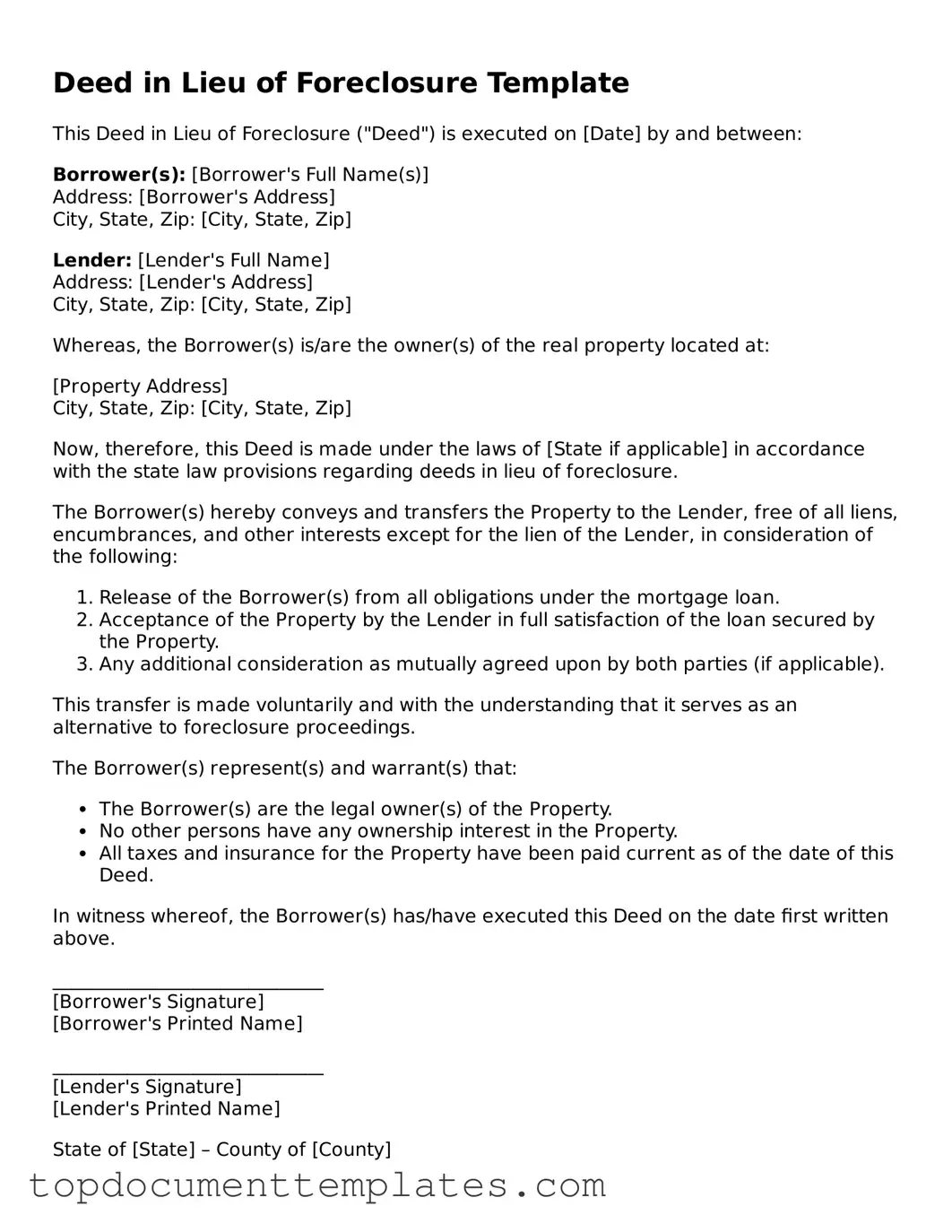The Deed in Lieu of Foreclosure form serves as a significant legal instrument in the realm of real estate, particularly for homeowners facing financial difficulties. This document allows a property owner to voluntarily transfer the title of their home to the lender, effectively avoiding the lengthy and often costly foreclosure process. By executing this form, the homeowner can mitigate the negative impact on their credit score and seek a more amicable resolution to their financial obligations. The form typically outlines the terms of the transfer, including any agreements regarding outstanding debts and the condition of the property. It is essential for both parties to understand their rights and responsibilities as detailed in the document. Additionally, the Deed in Lieu of Foreclosure can provide a pathway for lenders to recover their investment without resorting to foreclosure, which can be beneficial for both the lender and the borrower. Understanding the implications and requirements of this form is crucial for anyone considering this option as a means to navigate financial distress.
